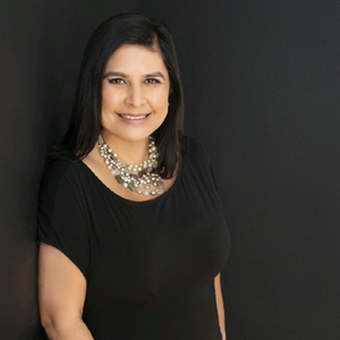How Internal Communications Can Promote a Culture of Equity

There are many debates in the inclusion world on whether or not the focus should be on equity or equality. Some of this debate is driven by a misunderstanding of the terms and some by fear. If everyone did have the opportunity to begin from the same starting point, what does that mean for those who have benefitted from unfair, oppressive systems that have stopped underrepresented people and women from progressing?
As we wrote our book, Building a Culture of Inclusivity, we realized that many still struggle with implementing equitable initiatives and understanding the differences. They will say that we must treat everyone the same. They will argue that giving people from marginalised and underrepresented groups additional support is unfair to others.
However, it's essential to understand that equality is about equal treatment, while equity is about equal outcomes.
In this article, we'll explore the importance of equity in the workplace, the role of internal communication professionals in promoting equity and strategies for creating a more equitable workplace through internal communications.
Equity in the workplace
Equity in the workplace means that every colleague has equitable access to resources, opportunities and benefits, regardless of their background, identity, or status. It's not about treating everyone exactly the same; it's about recognizing and addressing the unique challenges and barriers that different colleagues may face. Research and studies also prove that promoting equity in the workplace has numerous benefits. For one, it can improve employee satisfaction and morale. When employees feel that their contributions are valued and have equitable access to opportunities, they are more likely to feel engaged and motivated. Additionally, promoting equity can increase productivity and reduce turnover by ensuring all employees are given the tools and resources needed to succeed.
Equity does not account for biases, systems and processes built by dominant groups (consciously or unconsciously) that help to maintain the status quo. We must ask ourselves:
- What does fair representation look like?
- What are the barriers getting in the way of that representation?
- Does everyone have an equal chance to succeed?
- Why doesn't the gender representation seen at the front line of an organization rise to the top of leadership ranks?
- Why is this even more challenging when we add other characteristics like age, disability, race and sexual orientation?
One step to embracing equity is to ask these questions with curiosity, instead of judgement. There is an opportunity to approach these problems with wonder to create solutions that help us move forward.
The role of internal communication professionals
Internal communication helps create connection, community and culture. The reality (and challenge) with DEI is that beyond the professional conversation, it’s also deeply personal. Whether people are feeling impacted positively or negatively by an organization's or leader's actions, or lack thereof, many will question how action or inaction personally affects them. If you are feeling included, you embrace change; if you feel excluded, you may choose to ignore or resist. This is where internal communication professionals can play a critical role in promoting equity within organizations.
Communication professionals are responsible for crafting the messaging that employees receive from leaders and developing policies and initiatives that can support equity. They have the power to promote voices from diverse backgrounds to ensure their stories are amplified, and they can ensure messaging is as inclusive as it can be from the language used to the channels the information is shared.
In our book, we talk about the different stages of DEI E-volution that impacts us as individuals in a personal and professional capacity. The model also helps organizations understand what evolution stage they are currently demonstrating. It's important to note that embrace falls in the middle of the E-volution framework. This means that we must take several steps before we reach the embrace stage and understand the work we need to do once we embrace the progression.
The DEI E-volution
Evolution | Personal | Professional |
Exist |
|
|
Enter |
|
|
Educate |
|
|
Embrace |
|
|
Engage |
|
|
Embed |
|
|
As noted above, internal communications and conversations are crucial to driving change and helping employees embrace equity. They play a vital role in each stage of the DEI E-volution by:
- Communicating expectations
- Sharing a vision of what good looks like
- Explaining why change is relevant and integral
- Painting a picture of how embracing equity is connected to success and stability for the organization and a culture of inclusion and belonging for employees.
It's not a stretch to understand that success is a group effort. Leaders without employees cannot be successful. Underrepresented groups, including women, cannot succeed without the support and advocacy of dominant groups embracing equity.
How can you embrace equity this International Women’s Day
- Be aware of the intersectionality of women. Historically, organizations often favour white women without considering the multiple-characteristics. So, if you are sharing stories, having presentations, highlighting leaders, etc., ensure you have a range of voices.
- If you are recognizing International Women’s Day, then ensure that you’re fully aware of what the gender pay gap is within your organization and acknowledge that there’s still work to do. Last year a gender pay gap bot in the UK called out organizations publicly for inequities in pay.
- Review the progress made in the last year when it comes to women in the workplace. Has your organization made some changes? If so, celebrate the progress and highlight the next steps. If not, then seriously consider what your intent is behind the awareness campaigns you are sharing. Colleagues will be looking for progress, not performative words and actions. Performative equality can cause more damage than not saying anything at all.
- The work of progressing women’s opportunities within our society and of building equitable workplaces must be an ongoing effort beyond International Women’s Day. Ensure that your plans are tied into the corporate objectives and the organization’s business and DEI goals. Encourage leaders to track progress and report frequently through appropriate channels.
Internal communication is an integral enabler of success by connecting words to actions, values to behaviours, strategy to results and brand promises to employee and customer experiences. Good intent doesn't magically turn into impact if it's not intentional. If we are committed to driving change regarding women and other underrepresented groups in the workplace through embracing equity, we need to plan and be purposeful.
It's important to remember that our most significant opportunities lie in our ability to encourage inclusive and sometimes uncomfortable conversations. We can help our leaders and employees be aware of plans, policies and programmes; understand why they are necessary for success; believe that changes will drive a culture of inclusivity; and create clarity on the behaviours, actions and decisions expected to demonstrate commitment.
As we recognise and celebrate International Women's Day, we must ask ourselves what each of us is doing to make a difference. What are we doing to embrace equity? How are we planning to step up and provide support to those who need it? It's easy to point fingers at others. But we all have a responsibility to ensure we are equity-focused in our internal communication efforts, especially if we want to build a fairer, more equitable workplace. Remember, progress is better than perfection.





